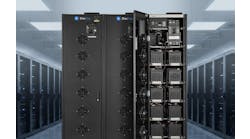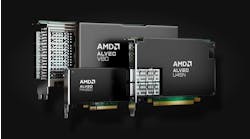New Approaches to Meeting Data Centers’ Energy Demands: Distributed Energy & Small Modular Reactors
Data center growth is unfolding at an unprecedented rate, and it’s now anticipated that 16-23% of U.S. electricity could be consumed by data centers alone by 2033 according to a recent report by Accenture. As utilities and data centers grapple with how to meet this demand in energy with an antiquated power grid and rising electricity and natural gas costs, new solutions from distributed energy resources (DERs) and microgrids are emerging. One potential component of these solutions is small modular reactors (SMRs). SMRs, which have accelerated deployment anticipated in the 2030s, can pair with other renewable energy sources, are efficient and scalable, and can play a significant role in achieving emissions reduction goals.
Microgrids offer a solution to address the energy challenges from data centers’ explosive growth by lowering costs compared to that of utility power and providing power where grid infrastructure is limited. Aside from cost-efficiency and grid independence, microgrids bring resilience and form low-carbon energy sources. Research from Xendee in collaboration with the University of Illinois Urbana-Champaign (UIUC), has shown that a multi-year approach can address energy needs in two phases, for the short term and long term. To start, renewables coupled with Combined Heat and Power (CHP), and energy storage can reduce initial energy costs and bring flexibility. In the long term once commercially available, SMRs can deliver baseload power and address the substantial load growth of the data center. What’s more, SMRs can alleviate the rising costs of natural gas and electricity, while ensuring energy security.
This two-phased approach emphasizes the importance of adaptability in meeting modern energy dilemmas.
SMR’s Success in Regions with High & Low Electricity Costs
In Xendee’s recent study, an analysis was done comparing the multi-year approach that integrated SMRs into the long term planning of data centers in two locations: one in Santa Clara, California and the other in Data Center Alley in Ashburn, Virginia. These two distinct areas face unique challenges of their own, whether it be rising electric costs or competing demand for energy. In the study’s analysis, each region had presented unique benefits to the multi-year approach in microgrids that incorporate SMRs. The multi-year approach strategically introduced DERs, including gas generators and absorption chillers in 2025, to minimize operational costs and prepare for SMR integration.
Santa Clara, CA’s High Electricity Costs are Eased with SMR Planning: The analysis for Santa Clara, CA, revealed both economic and environmental advantages of the multi-phased approach.
- In the Utility-only case, the levelized costs of energy (LCOE) discounted for the project length is highest ($0.4704 /kWh).
- In the Utility with SMR only case, the LCOE discounted for the project length is $0.1153 /kWh
- The Multi-Year Approach that considers DERs achieves a significantly lower LCOE of $0.0383/kWh, inclusive of all investment costs. These costs could be higher depending on the future SMR costs.
This difference is driven by the strategic integration of DERs, starting in 2025, which results in 79.66% operational expenditure (OPEX) savings and an 8.69% reduction in emissions over the project period (compared to the utility with SMR only case). Relative to the Utility-Only Case, the multi-year approach achieves an OPEX savings of 95% and an emission reduction of 60%.
Data Center Alley in Ashburn, VA’s Finds Further Electricity Savings & Emissions Reduction: Ashburn, VA, presented similar advantages for the multi-year approach, even with the region-specific dynamics at play in this area.
- The Utility-Only scenario yields the highest discounted LCOE, reaching $0.1409/kWh over a twenty-year period.
- The Utility with SMR case produces a discounted LCOE of $0.0486/kWh, compared to $0.0350/kWh for the Multi-Year Approach. However, there is still a considerable amount of uncertainty in the future SMR costs.
- This included 59.51% OPEX savings and a 23.86% reduction in emissions over the project period.
Compared to the Utility-Only Case, the multi-year approach achieves an OPEX savings of 95.82% and an emission reduction of 58.76%.
The Multi-Phased Approach: Flexibility through Evolving Energy Conditions
One finding from Xendee’s research remains clear: relying solely on the utility grid with no investments into DERs or SMRs will always deliver the highest LCOE. Proactive planning to address the energy demands that are only increasing from artificial intelligence and the broad digital transformation is a necessary endeavor. As data centers look to secure financial viability, whether they are in a high-cost or low-cost energy region, reducing LCOE and enhancing their energy investment efficiency is needed in both short term and long term planning.

Michael Stadler
Michael Stadler is co-founder and Chief Technology Officer of Xendee. Before co-founding Xendee in 2018, Dr. Michael Stadler was a Staff Scientist at Lawrence Berkeley National Laboratory and led their Grid Integration Group. He also received the White House’s Presidential Early Career Award for Scientists and Engineers (PECASE), which is the highest honor bestowed by the U.S. government on science and engineering professionals in the early stages of their independent research careers. Michael has published more than 270 papers, journals, and reports to date and holds 17 copyrights and patents.
Xendee is a leading provider of software for the design and operation of Distributed Energy Resources (DERs) for data centers and EV charging infrastructure.






